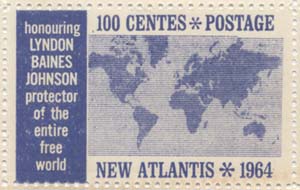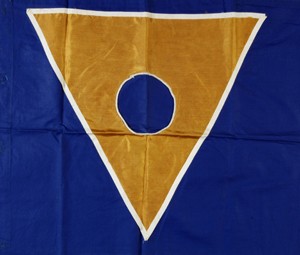 |
| Murder on Hood Canal |
 |
| Gothic and Historic |
 |
| Tacoma WA. Murder |
Island in the Stream
. . . Your Dream
“Ineffectual,”
“inept,” “a constant failure,” these are just a few ways Ernest Hemingway
described his brother, Leicester. So
being the less-brilliant, younger brother of a world-renown author, what could
Leicester do to become famous in his own right?
Well, he could work
hard and become president of a
foreign country—a country that he created on a platform in the Caribbean Sea off the island of Jamaica, a
wacky pursuit and therefore sure to inspire others.
On July 4, 1964, Leicester Hemingway introduced the
world to New Atlantis
It’s
hard to know how serious Leicester was about his enterprise, but perhaps very
serious. He not only waited until three
years after his famous brother’s death before launching the kingdom, he also
used his own money to create it, money that came from the proceeds of his book, My Brother, Ernest Hemingway.
Approximately six
miles off Jamaica’s coast, in international waters, Leicester found a place
where the ocean floor, normally about 1,000 feet below sea level, was only
fifty feet down. “Anything we build there is legally called ‘an artificial
island,’” Leicester said.
First he put
down a foundation made of used steel, iron, and bamboo cables weighted down with
a ship’s anchor, a railroad axle, and steel wheels, an old Ford motor block, and
other scrap metal. To this he attached
an eight-by-thirty foot bamboo log platform.
He claimed half of the structure for New Atlantis and half for the
United States government, based on the U. S. Guano Island Act of 1856. In the 1850s, guano (bird poop) was a
valuable fertilizer, and Western nations were busy claiming unoccupied areas
having guano deposits. The act
authorized United States citizens to take possession on behalf of the
government of “any unoccupied island, rock or key on which
deposits were found.”
New
Atlantis’s first citizens were Leicester Hemingway, his wife, Doris, and their
daughters Anne, aged seven, and Hilary, aged three. Eventually, the citizenship grew to seven
with Leicester as president. In an ironic
but classy touch, a British subject named Lady Pamela Bird, who held dual
citizenship, became vice president. Thus, New Atlantis had its own Lady Bird.
As president,
Leicester drew up a constitution based on that of the United States but with
one line taken from the Swiss constitution which prohibited gambling.
A constitutional provision let honorary
citizens be elected president with no oath of office required.

Leicester
created an official currency comprised of a fish hook, carob bean, shark’s
tooth, and other items. He called it the
New Atlantis scruple. “The scruple was
chosen as a unit of currency,” he explained, “because the more scruples a man
has, the less inclined he is to be antisocial.”
His raft island national flag, sewn by Doris,
 was a blue square with a gold triangle in the middle and a blue circle in the
middle of that. She made at least four
flags because storms and thieves frequently left the flagpole empty. And finally, Leicester issued five different
denominations of postage stamps. They
honored the provisional government of the Dominican Republic, the United States
4th Infantry, Winston Churchill, Herbert Humphrey, and Lyndon B.
Johnson. President
Johnson sent Leicester a letter addressed to Leicester Hemingway, Acting President, and Republic of New
Atlantis thanking his fellow president for some New Atlantis first-issue
stamps. Since it came from the president and
went through the United States postal system, it inadvertently gave the
fledgling republic approbation.
was a blue square with a gold triangle in the middle and a blue circle in the
middle of that. She made at least four
flags because storms and thieves frequently left the flagpole empty. And finally, Leicester issued five different
denominations of postage stamps. They
honored the provisional government of the Dominican Republic, the United States
4th Infantry, Winston Churchill, Herbert Humphrey, and Lyndon B.
Johnson. President
Johnson sent Leicester a letter addressed to Leicester Hemingway, Acting President, and Republic of New
Atlantis thanking his fellow president for some New Atlantis first-issue
stamps. Since it came from the president and
went through the United States postal system, it inadvertently gave the
fledgling republic approbation.
Had it not been
for storms which repeatedly took out the platform, Leicester would have enlarged
it to 100 yards wide and half-a mile long.
His future plans included a lighthouse, a shortwave radio station, a customs
house, and, of course, a post office. In
the end, he quit rebuilding and turned all the country’s documentation over to
the University of Texas at Austin.
The
purpose of New Atlantis was never clear. Leicester explained, once, that it was to
house the headquarters of the International Marine Research Society, an
organization he founded. The society’s
mission was to raise funds for marine research, and to build a scientifically-valuable aquarium in Jamaica. A possible
side benefit of the raft island was that it could possibly help protect the Jamaican
fishing industry. But then Leicester
also said he founded New Atlantis mostly to have fun and “make
dough”—presumably from the stamps.
After
the demise of New Atlantis, Leicester tried to found another island
nation—Tierra del Mar. This time, four
State Department officials explained to him, in no uncertain terms, that
“attempts at creating this (new) island would be viewed by the United States
government as a highly undesirable development, adverse to our national
interest, particularly as it might encourage an archipelagic claim,” i.e. serve
as a springboard for annexation of one of the nearby Bahaman Islands.
Private
islands and platform island nations have a long history. When George H. W. Bush was president, his
friend, Dean Kamen, inventor of the Segway, bought North Dumpling Island. Kamen referred to it as the Kingdom of North
Dumpling and to himself as Lord Dumpling. North
Dumpling is a two-acre “pirate island” in Fisher’s Island Sound off the coasts
of both New York and Connecticut. It
had a lighthouse and a replica of Stonehenge.
Kamen created his own constitution, flag, national anthem, and navy (a
single amphibious vehicle). Its currency
was in increments of Pi. Ben Cohen and
Jerry Greenfield of Ben & Jerry’s Ice Cream served as joint Ministers of
Ice Cream. When Kamen was refused
permission to build a wind turbine, he joked that though he had signed a
non-aggression pact with President Bush, he would secede from the Union. At some point, however, he installed a Bergey
10KW turbine on an 80-foot, self-supporting tower that he stacked in place
using a gin-pole and winch system.
While
North Dumpling is a real island, it has nothing on Spiral Island, a “floating
artificial island first built in a lagoon near Puerto Aventuras in southern
Mexico.”
In
1998, British expatriate Reishe Sowa moved to the area along the Caribbean
coast and began picking up empty, discarded plastic bottles, left-over pieces
of wood from construction sites, and bags of leaves. The 250,000 bottles he gathered and filled
with sand became the flotation for a bamboo and plywood base on which he built
a two-story house, complete with a solar oven and self-composting toilet. Mangrove trees and other tropical vegetation he
planted on it gave the platform a real island feel and appearance. Sowa’s pets—eight cats and one dog as of
January 2006—gave it a homey feel.
Of
course what Sowa built technically isn’t an island. “Not even the president is allowed his own
island in Mexico,” he said. “I have an
eco space creating ship. I can move it,
after all.”
Nature
could also move it. After a 2005
hurricane took Spiral Island out, Sowa rebuilt what is now a tourist attraction
near Cancun.
It’s
not hard to have a quasi-island either on land or water. The International Marine Floating Structures
company has been building floating homes for twenty-five years. They have contractors throughout Canada, the
United States, Europe, and Central America.
Or for actual terra firma,
consider someplace rural, such as Nevada’s The Republic of Molossia. It’s been around for over thirty years old.
SOURCES:
This started from a pre-Google
article in Smithsonian magazine. Google micro nations and it’s all there.










